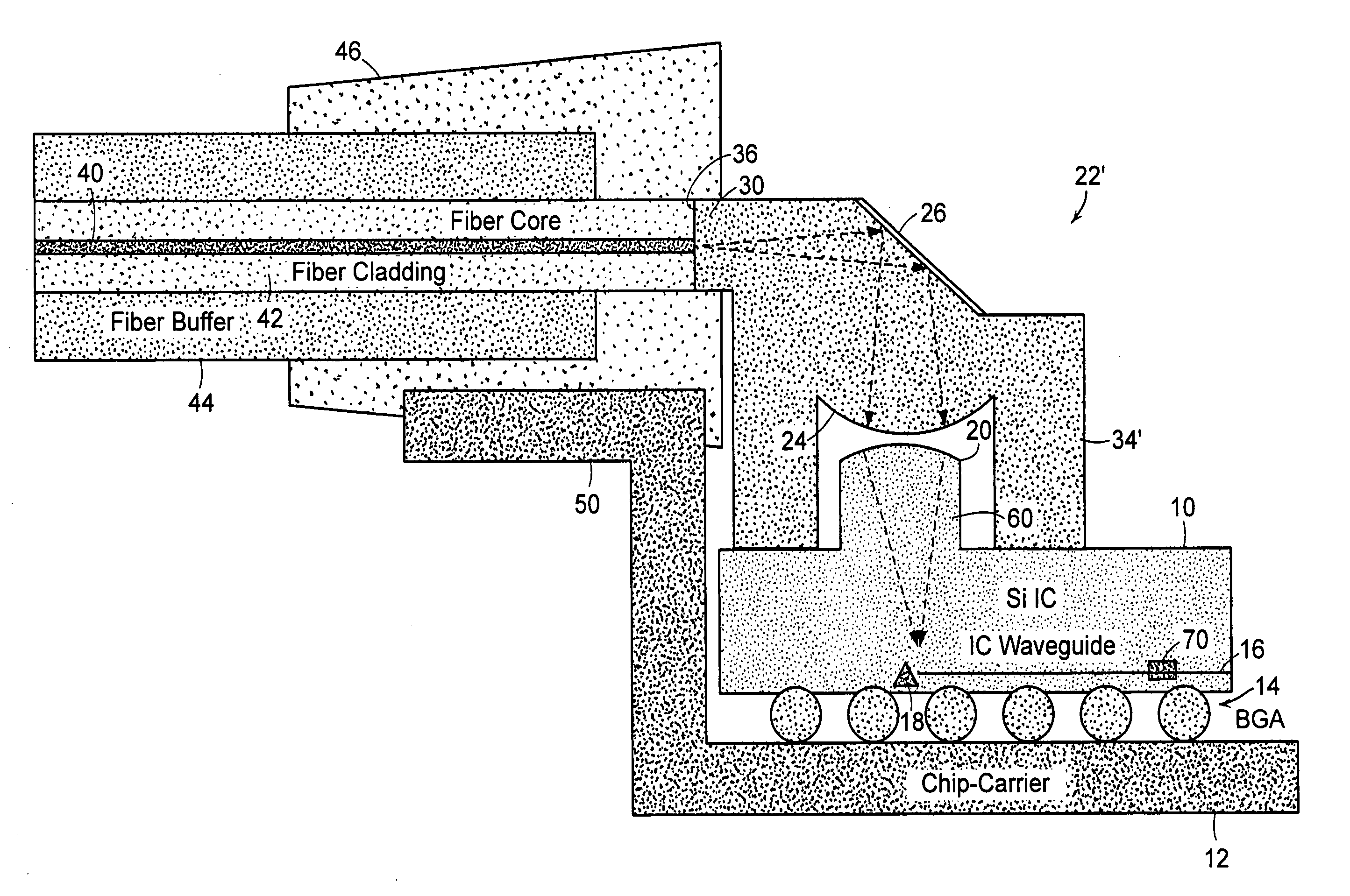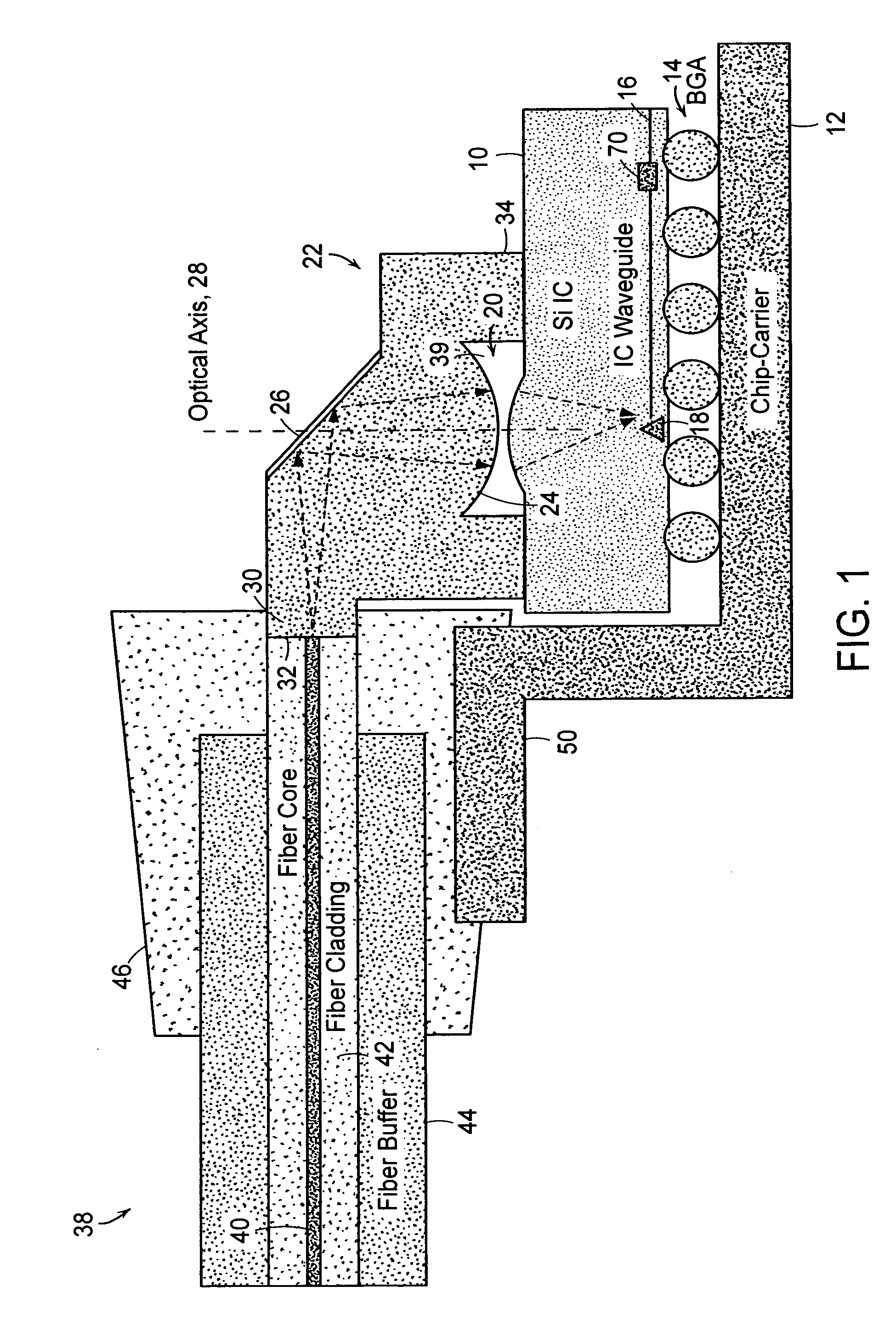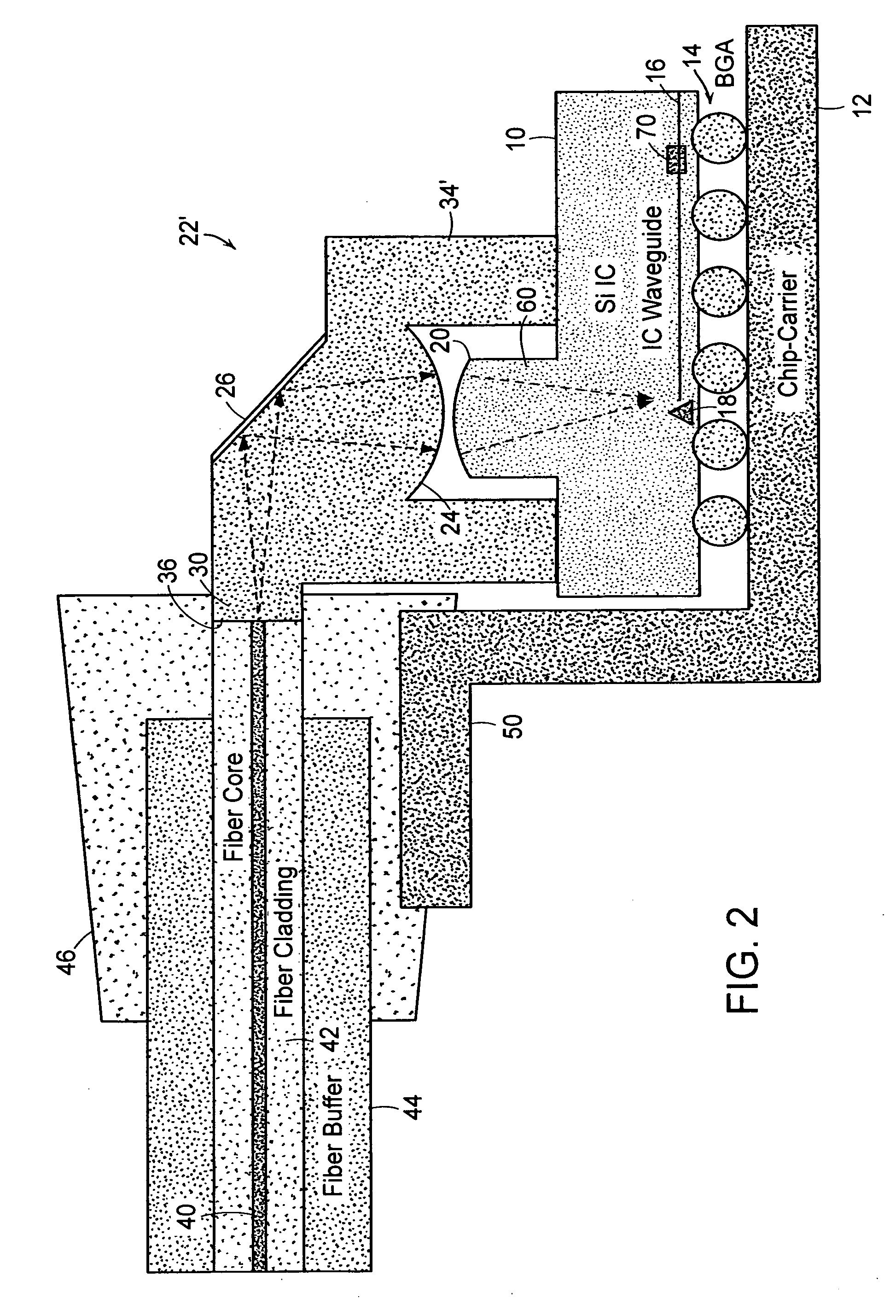Optical coupling to IC chip
- Summary
- Abstract
- Description
- Claims
- Application Information
AI Technical Summary
Benefits of technology
Problems solved by technology
Method used
Image
Examples
Embodiment Construction
Structure:
[0035] Embodiments are described herein that represent various structures for coupling optical signals to optical waveguides that have been fabricated on or in an IC chip. In general, in these embodiments the optical coupling to the IC waveguide is accomplished by directing a beam (which may be a diverging beam, a converging beam or a collimated beam) to a Si lens fabricated on and integral to the backside of the IC chip (i.e., silicon substrate). In at least some of the described embodiments, the beam will be a substantially collimated beam. The Si lens then focuses the light beam into the IC waveguide via a 45° mirror located at the IC waveguide. The collimated light beam between the external optics and the IC optics passes through dry air. The collimating lens and the Si focusing lens both have anti-reflection (AR) coatings to keep the optical coupling losses low.
[0036] One embodiment is illustrated in FIG. 1. It shows an IC chip 10 that is flip-chip mounted onto a c...
PUM
 Login to View More
Login to View More Abstract
Description
Claims
Application Information
 Login to View More
Login to View More - R&D
- Intellectual Property
- Life Sciences
- Materials
- Tech Scout
- Unparalleled Data Quality
- Higher Quality Content
- 60% Fewer Hallucinations
Browse by: Latest US Patents, China's latest patents, Technical Efficacy Thesaurus, Application Domain, Technology Topic, Popular Technical Reports.
© 2025 PatSnap. All rights reserved.Legal|Privacy policy|Modern Slavery Act Transparency Statement|Sitemap|About US| Contact US: help@patsnap.com



